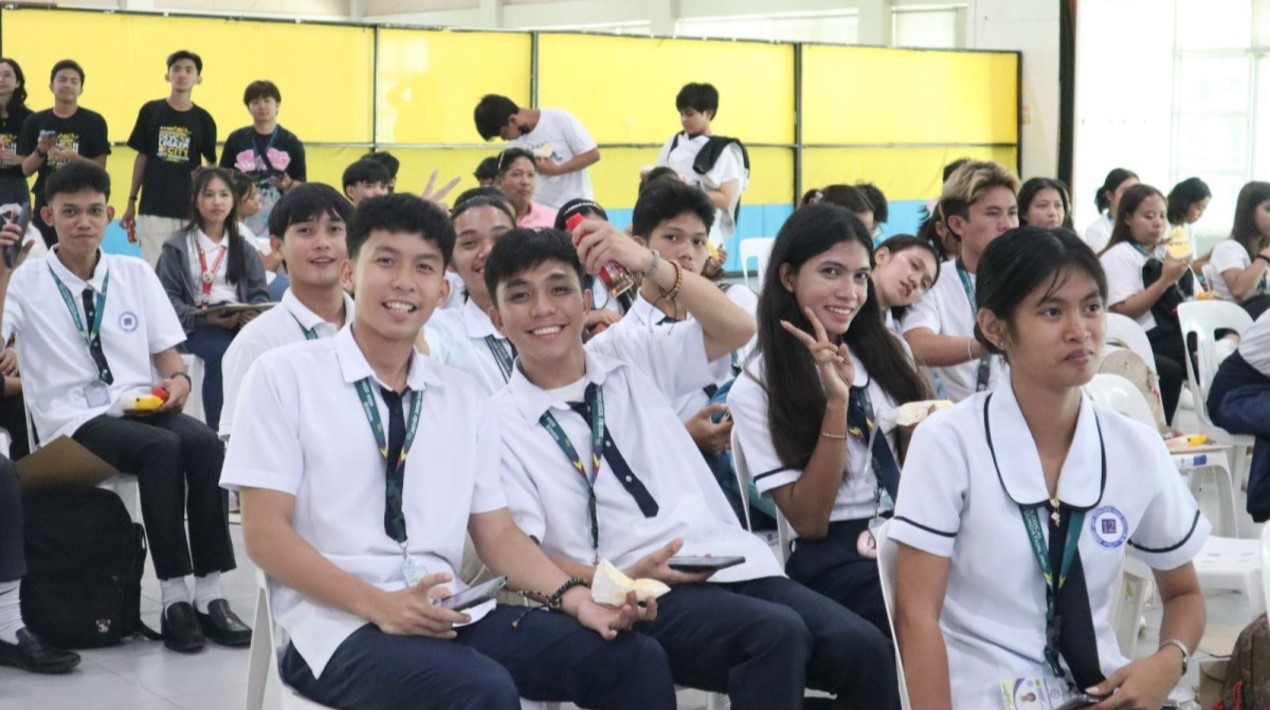
Artificial intelligence (AI) applications are progressing by leaps and bounds today. But are we getting any closer to understanding human intelligence or replicating it in machines?
That is what the Center for Brains, Minds & Machines (CBMM) at the Massachusetts Institute of Technology (MIT) seeks to do. CBMM is a multi-institutional NSF (National Science Foundation) Science and Technology Center headquartered at MIT, dedicated to developing a computationally based understanding of human intelligence and establishing an engineering practice based on that understanding.
CBMM has around 20 faculty members from institutions such as MIT, Harvard University, Stanford University and Rockefeller University. They are a combination of neuroscientists ,cognitive scientists and computer scientists. Neuroscientists study the brain, cognitive scientists look into the mind, and the computer scientists work with machines. CBMM is about collaboration across these three disciplines.
OpenGov had the privilege of conversing with Prof Tomaso A. Poggio, Director at CBMM. He is also the Eugene McDermott Professor at the Department of Brain and Cognitive Sciences; and Member of the Computer Science and Artificial Intelligence Laboratory at MIT; and since 2000, a member of the faculty of the McGovern Institute for Brain Research.
Prof Poggio leads a program at MIT that counts amongst its alumni several of today’s AI leaders, including Demis Hassabis, cofounder of DeepMind, Amnon Shashua, cofounder of the autonomous driving tech company Mobileye, and Christof Koch, President and Chief Scientific Officer at the Allen Institute.
We asked Prof Poggio if there is any commonly agreed upon definition of intelligence and based on that, what would be the definition of artificial intelligence. He replied that people have yet to fully agree on a definition of intelligence.
One relatively standard definition is that the Turing Test, which essentially says if you see intelligence you know it. If machines cannot be distinguished from a human, then they are intelligent.
Prof Poggio pointed out that the interesting part which not many people realise is that the Turing test for intelligent machines is effectively a definition of human intelligence.
“I don’t think there is a definition of intelligence. I think that’s in a sense a meaningless question. Because there are so many different forms of intelligence. A computer that is better than humans at doing additions, is that intelligent? Super-intelligent?” he said.
“When people think about intelligence or intelligent computers, super-intelligent computers, what they really think about is human intelligence. It could be more memory, faster speed, but human intelligence.”
But if we are saying that a computer is intelligent, even if in a very narrow sense, does it matter how the system is arriving at that thought or action?
Prof Poggio said that one of the basic tenets of computing is that computing is in principle independent of hardware.
“You can have a computer which is made of silicon transistors, you can have a computer which is made of mechanical switches or even hydraulic switches or neuron cells. But they may not be different in what they compute.”
In reality, certain computations are faster in certain types of implementations and this depends on the hardware.
For instance, silicon computers are very good and very fast at particular computations that involve manipulating numbers, whereas our brain is not very good at it. And conversely, computers still struggle to recognise images or speech and cannot do so with low power consumption. They are just getting there though, primarily through data-driven deep learning techniques.
Deep learning attempts to mimic layers of “neurons” in the brain. Each layer combines a set of input values to produce an output value, which in turn is passed on to other layers downstream. Though the idea has been around for decades, explosion in data volumes and improved, cheaper computing power has enabled its widespread implementation during the last decade. And it has led to exponential improvement in areas such as image classification and facial recognition, resulting in the current deafening buzz around AI.
But still an AI system has to be trained with thousands or tens of thousands of images to distinguish a cat from a dog. We humans do not need to see 100,000 images to recognise a cat as a cat. a 3-year old can learn what is a cat from maybe three or four examples. So, we asked Prof Poggio about the potential and limitations of deep learning.
He responded that deep learning can lead to superhuman abilities in certain areas.
“As an example, I am able to find any papers I want with just a few keywords in Google search. This is much better than any human librarian could ever do,” he said. “There are certainly many other applications, where a combination of deep learning and having a lot of labelled data can lead to really superhuman abilities. But they are very specific.”
Today if we can define a task in a narrow enough way, such as recognising images (especially those of a certain type), recognising speech in certain environments, recognising music, playing go, playing chess, driving a car, we can build the technology to perform it.
“What we don’t have is a system that can solve all of these things like a person, maybe none optimally, but all of them at the same time, and with not much training.”
In that case, we should not be worrying too much at the moment about AI taking over jobs, involving creativity, requiring perception?
Prof Poggio is not too worried at the moment. But he added, “At some point, we will make machines that are as intelligent as we are in some meaning that people will agree upon. I think it will take longer than people think, I think we are safe now.”
“One of the reasons is that I don’t think the problem of intelligence is one problem that you solve with one breakthrough. I think the problem of intelligence is many problems and will require many breakthroughs. Different aspects of human intelligence, like what I would say social intelligence, the ability to recognise what other people are thinking, whether they are happy or not, this is a part of the brain, and there is a separate part of the brain which is actually involved in the robotics part. And of course, they interact. But they are also separate.”
He referred to a recent article by Demis Hassabis, one of his former post-docs, saying that the next big breakthroughs in AI is likely to come from neuroscience. That is an idea Demis shares with Prof Poggio and that’s why collaboration is required between AI researchers and neuroscientists.
So, will we see general AI at some point of time, if not in the near future?
The answer is a bit complicated, Prof Poggio replied. He can see systems like Siri or Alexa slowly become more and more useful and intelligent. But if we are talking about having a system that is indistinguishable from a smart secretary in 15 or 20 years time, then the possibility would depend on what we mean by a smart secretary. If we want the smart secretary to be able to perceive human emotions, then it might not happen within the timeframe of another 15 to 20 years.
When asked if we are paying enough attention to the issues that might arise if general intelligence becomes a reality,Prof Poggio replied, “I think we are not paying enough attention to them”.
For instance, technol
ogy is going to take out a lot of jobs. It is already happening. In the US and in parts of Europe, we can see the rise of unrest and populism. But it is not so much immigrants stealing jobs, as it is machines stealing jobs.
“I can see that over the next 20 to 50 years, the jobs that will be safe would be jobs like scientists, engineers on one hand, and jobs like plumbers on the other hand. But in between, jobs like airline pilots, surgeons, tax advisors, financial consultants, they can all be potentially replaced. Replaced does not mean completely eliminated. It’s like the job of being a pilot. Basically today, there are one or two pilots babysitting a computer that is doing the flying. And the same is going to happen for a heart surgeon. Instead of hundred surgeons, you now need 10 (who are assisted by technology.”
New jobs will be created, but maybe not for the same people. If it happens too fast, it will be a problem. A big displacement would mean revolutions and wars. Here, Prof Poggio highlighted thatthe pace of disruption is critical.
Technological developments have caused societal disruption in the past. Horses were replaced by cars. But the disruption was slow enough that there weren’t too many revolutions.
“But this time it may happen faster, it may be more pervasive, I don’t think the tech industry is worrying enough about this. Because, it’s really a socio-political problem. If machines do their work that people do, you have to make sure that people who have lost their jobs are still being paid, can survive and are happy even without a job,” Prof Poggio said.
The fact that it’s not a matter of life and death tomorrow, makes it more difficult in a sense.
Prof Poggio cautioned, “It’s a relatively slow-moving train and by the time you notice it, it might be a bit too late.”
However, the problem can be solved. If people can agree and if there is the requisite political will. But we must take notice of the risks and start acting soon.
















